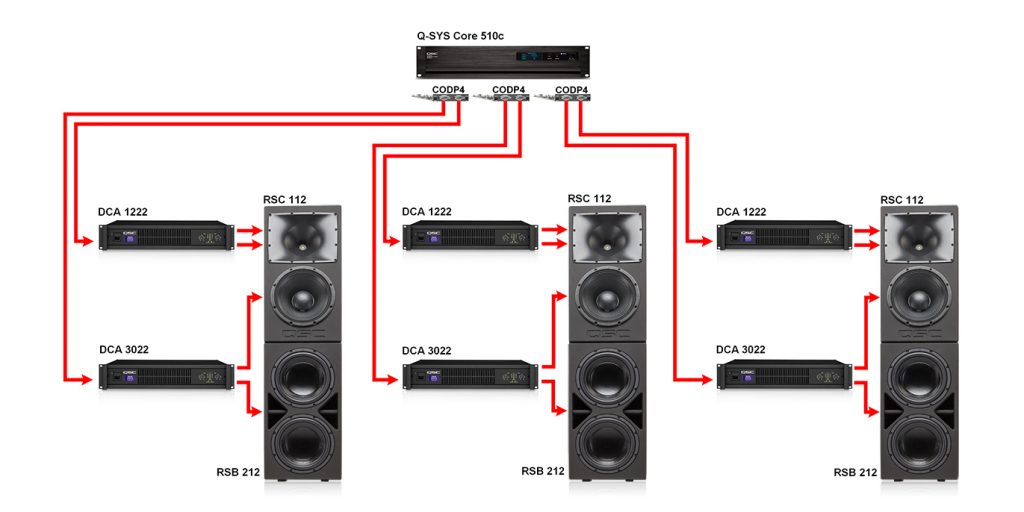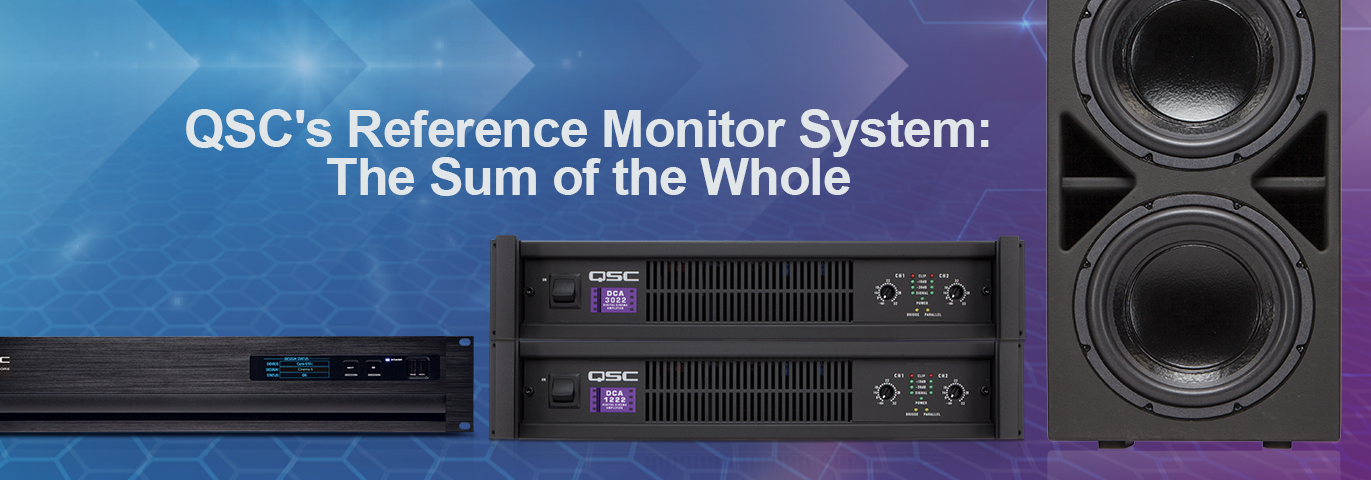One of the hallmarks of QSC products is the concept of the total system design. Simply put, a system of a prescribed set of components that were designed to work together will always outperform a disparate set of components. This is the idea behind QSC’s “SystemSynergy,” any QSC powered loudspeaker, and any system configuration recommendation from QSC technical support staff.
One of the best examples of this concept is our Reference Monitor System. Think of the RMS as a powered speaker system, just not all in the same box. Just as powered speakers benefit from having matched amps, loudspeakers, and DSP, it is the same with RMS. From power ratings to gain structure to optimized DSP, RMS is a system that is optimized to work together. It’s a complete audio system including loudspeakers, signal processing, and power amplification intended for the best possible sonic performance in critical listening applications. Critical listening applications include cinema screening rooms, post-production facilities, dub stages, recording studios, or any high-end home theatre or premium cinema where nothing but the best will do.
Our reference monitor system combines most of what we know about how to get the best sound, including:
- Intrinsic Correction™
- Co-axial high frequency/very-high frequency drivers
- Directivity Matched Transition™ design
- Solid, heavily-braced low frequency enclosures
- Baffle-mounting
- Ultra low-noise DCA amplifiers
- Q-SYS™ Core 510c processor with CODP4 I/O cards
If you really want the very best audio experience, this is the recipe. Just like any recipe, if you leave out even one ingredient, you will not get the desired result. For us to make this “Optimal Sound” claim and stand behind it, we have a strict policy that the Reference Monitor System is sold as a system. In essence, you cannot purchase the individual loudspeaker components without the rest of the system. Why would you want to? We have done the “system configuration” work for you! And, if you were to use them with other amplifiers or signal processing, you simply cannot expect optimal sound.
One Q-SYS Cinema Core 510c provides all the DSP for three screen channels (Left-Center-Right), or a Left-Right pair for stereo music. Each “stack” requires one CODP4 I/O card in the Core, which provides the DataPort connection to the DCA amplifiers for that stack.
Also note that the Reference Monitor System does not require extra subwoofers. Each “stack” includes a matched subwoofer. Similarly, the RMS does not specify surround loudspeaker models and amplification, since each room is different and in some cases (like a music-only application) there may be no requirement for any surround loudspeakers. Size, cosmetics, and performance issues all need to be considered when choosing surround systems. We suggest contacting QSC Cinema application engineers early in the project to verify that the surround systems and overall system design are optimized for the maximum performance that RMS systems can achieve.
For critical listening applications where only the best will do, the QSC Reference Monitor System represents the pinnacle of sonic performance.

Mark Mayfield
Derniers articles parMark Mayfield (voir tous)
- Seven “Cins” of Cinema - October 26, 2021
- Introducing Cinema 101 - May 27, 2021
- Control Your Barco Cinema Projector with Q-SYS - April 9, 2021
